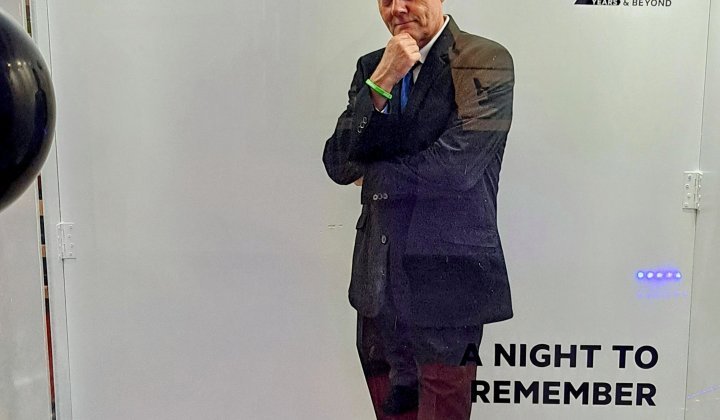Physical signs like being short-tempered, overly tired or finding basic tasks difficult may indicate that someone at work could be stressed. For some people, however, the signals could all be internal, such as stomach pains and difficulty breathing, while others may be altogether more adept at hiding that they are struggling.
A recent study released by public research university ETH Zürich reveals that there is a simple and non-invasive way to identify work-related stress. Using new data and machine learning, they developed a model that links the way people type and move a computer mouse to stress levels. “How we type on our keyboard and move our mouse seems to be a better predictor of how stressed we feel in an office environment than our heart rate,” explains study author Mara Nägelin. “People who are stressed move the mouse pointer more often and less precisely and cover longer distances on the screen. Relaxed people, on the other hand, take shorter, more direct routes to reach their destination and take more time doing so.”
Identifying work-related stress as early as possible is important because managers may only notice that the physical and mental resources of a stressed team member are depleted when a major mistake occurs. Noticing the early signs can allow for interventions to be implemented.
Understanding the impact
Stress should be noticed but in many cases it can’t be eliminated because it's a necessary part of human functioning. Our bodies experience it in response to external stimuli that threaten health and well-being.
While personal situations such as relationship tensions, a sickly relative or a troublesome vehicle can lead to dismay, according to the World Health Organisation, the workplace is the number one source of stress for most people. For individuals who must lead in a fast-changing, volatile, uncertain, complex, and ambiguous (VUCA) world, stress levels can be high. Top stressors for leaders include high expectations and pressure to perform, the difficulties of balancing multiple responsibilities when decision-making, and the hardships that come with managing interpersonal relationships and conflicts. Then, leaders also face everyday frustrations like traffic, power cuts, and hunger.
Dealing with all these variables, some of which they cannot control, can result in leaders unintentionally stressing their staff. This can happen through setting unrealistic expectations, not providing clear direction, being inconsistent, or not providing positive feedback. Poor communication and a lack of transparency can have a domino effect of leading to employee stress.
Contrasting the output of stressed versus relaxed workers, the study at ETH Zürich found that people who feel stressed in the office make more mistakes when typing. They also write in fits and starts with many brief pauses, while the keyboard patterns of relaxed people revealed that they take fewer but longer pauses. Explaining these differences, psychologist Jasmine Kerr, who was a co-author of the study, noted that emotional pressure affects mental ability. “Increased levels of stress negatively impact our brain’s ability to process information. This also affects our motor skills.”
Managing the negatives
When it leads to decreased productivity, impaired decision-making, or is affecting health and relationships, stress needs to be managed and reduced. Stress that is left unattended for long periods can affect our bodies, mood, and behaviour. In his influential book, When the Body Says No: The Cost of Hidden Stress, Dr Gabor Maté underscores the importance of emotional self-awareness and healthy stress management. He encourages people to listen to their bodies, understand their emotional responses, and nurture their emotional health.
Some stressors, such as a toxic work environment or overwhelming workload, are constant and unchangeable. In such circumstances, it may be necessary to eliminate the source of stress entirely.
While it’s healthy to aim for a stress-minimised environment, it’s also important to acknowledge that a certain amount of stress occurs in the workplace, and particularly for leaders is inherent in most positions. By definition, people who rise to leadership roles have done so by demonstrating an ability to manage stress.
Personalities differ, however, so leaders need to remember that stress triggers vary from one person to another. One person may feel intense acute stress when asked to lead a presentation, while someone may feel positive pressure and be thrilled by the possibility of talking in front of people. Leaders need to know that what they may find motivational or exciting may be daunting and overwhelming for someone else. Getting to know and better understand team members can allow leaders to communicate effectively and delegate tasks correctly to individuals.
Additionally, leaders need to avoid harmfully passing on their own stress. They need to know their personal style under stress so that they can appropriately manage it.
The concept of one's “style under stress” refers to how individuals behave and respond when they are under significant stress or pressure.
Style under stress is typically characterised by a shift in behaviour towards one extreme or another, often manifesting as an exaggerated form of a usual communication style. For example, an ordinarily assertive person might become aggressive, while a typically reserved individual may withdraw entirely.
In their book Crucial Conversations: Tools for Talking When Stakes are High co-authors Kerry Patterson, Joseph Grenny, Ron McMillan and Al Switzler present the ideas of silence or violence as common and unproductive responses leaders demonstrate when they are stressed. Silence tends to involve withdrawing, avoiding, or shutting down, and violence is seen when leaders attack or try to control others.
Recognising your style under stress is the first step in improving how we handle stressful situations. By understanding our tendencies and triggers, we can work towards managing our reactions, improving our communication, and ultimately handling stress more effectively. This, in turn, can result in better outcomes in our personal and professional lives.
Alongside this awareness, leaders also need to implement measures to better handle the unavoidable stresses that come with their position. They can do this by practising effective communication, fostering a supportive work environment, prioritising self-care, seeking support from mentors or coaches, and implementing stress management techniques such as mindfulness, meditation, and physical activity.
Noting the good
There are, however, circumstances in which stress can be beneficial.
- Inventions have materialised because an individual was frustrated and decided to try to solve a particular problem.
- Entrepreneurs have emerged because an individual wanted to increase their earning capacity rather than continue with the financial limits of an employee salary.
- Careers have been changed because the difficulties of a particular industry made it no longer worthwhile or interesting or resonant.
- Promotions have been secured because an individual was able to use pressure as a motivator of action rather than a depleter of their energy.
The ability to rise to the occasion under pressure is one of the benefits of stress. This type of positive pressure is also known as eustress. It can drive a leader to improve, innovate, and overcome challenges. It can stimulate creativity, improve focus, and boost performance. For example, the conventional stresses of a new project can lead to new learnings, the achievement of goals, or the development and refinement of skills.
According to cardiologist Dr. Peter Nixon, there are different levels of stress, and the level experienced can directly affect performance.
Nixon developed the human function curve, a diagram to illustrate the balance of good and bad stress. He calls any state where we are awake and reacting to external stimuli an arousal state. One of the most common of these is being at work. In this environment our performance and ability can actually improve when we experience eustress. This positive pressure can be beneficial for the individual and by extension, the company.
Fostering and allowing for healthy tension can create an office environment where performance improves and a general zone of creative calm is enjoyed. Employee wellness programmes can play a vital role in helping offices identify and then wrangle stress for its potential good outcomes. Leaders who aim to foster a healthier work environment can do so by promoting physical health, emotional well-being, overall lifestyle improvements, and a healthy necessary amount of stress. This can lead to increased productivity, improved morale, and lower rates of absenteeism and increased turnover.
Resources to try
Whether it’s something for your whole team learn about together or a tool you want to enlist for your personal growth, here are some recommendations.
Books
The Stress-Proof Brain by Melanie Greenberg
The Stress Code by Richard Sutton
Emotional Intelligence by Daniel Goleman
Courses
"Managing Stress for Positive Change", available on LinkedIn Learning
"Building Resilience, Improving Stress Management, and Coping with Adversity", a masterclass from GIBS
Podcasts
The Daily Meditation Podcast by Mary Meckley
The Stress Solution by Dr Rangan Chatterjee
Videos
"How to Make Stress Your Friend" by Kelly McGonigal, available on Ted.com
"The Art of Stress-Free Productivity" by David Allen, available on YouTube
KEY TAKEAWAYS
- Stress is the body’s response to change. Reactions to stress differ and the types of things that cause stress can vary from person to person.
- A state of distress can cause physical, mental and behavioural issues such as headaches, sleeplessness, and irritability.
- Leaders can pass on stress to their staff, resulting in heightened tension, conflict among co-workers, office politics, and decreased productivity. Understanding your personal style under stress can enable better management of individual pressures.
- Stress isn’t inherently bad; it can help us to perform at a higher level and challenge us. This type of positive stress is called eustress.
- Personal situations can affect productivity at work. Work demands can also aggravate levels of stress beyond the capacity that some people can handle. Effective leaders are able to identify the different ways different team members need to be supported or motivated.
Dr. Frank Magwegwe is a permanent faculty member at GIBS. He lectures on corporate finance, employee wellness, personal mastery, resilience, and quantitative principles and widely consults in these areas. He is also a trusted financial wellness expert who is a regular contributor to newspapers and magazines and a frequent guest on radio and TV shows. Tune in to his show on Wednesday evenings from 20h15 – 21h00 on Radio 702.






